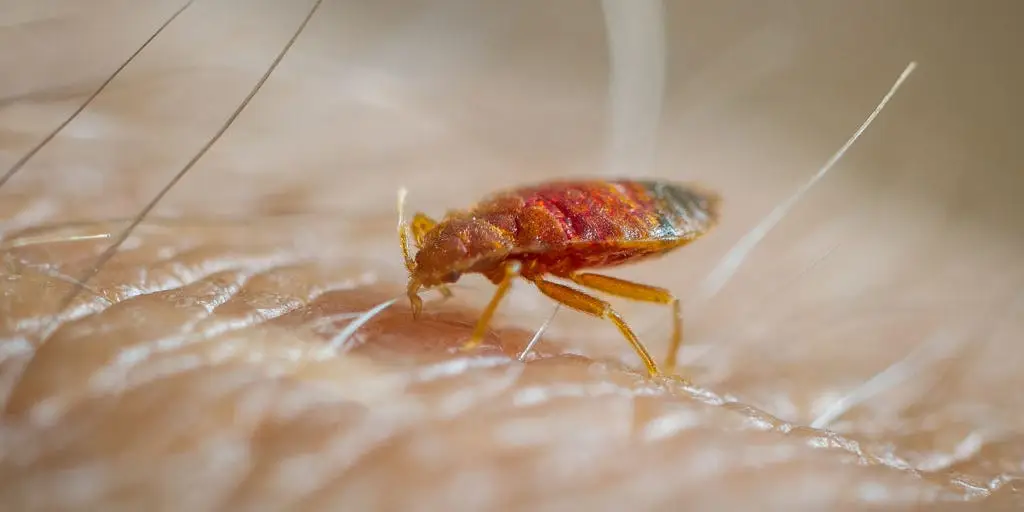
Key Takeaways:
- Recognize the visual indicators of a bed bug infestation.
- Learn about the common hiding places and behaviors of bed bugs.
- Understand when it’s time to contact a professional exterminator.
- Discover preventative measures to protect your home from bed bugs.
Visual Indicators of Bed Bugs
Recognizing the earliest signs of bed bugs is crucial to controlling their spread effectively and preventing a full-blown infestation. Bed bugs are notoriously elusive, often unnoticed until they’ve established a significant presence. One of the most unmistakable signs of bed bug activity is the appearance of small, rust-colored stains on bedding, sheets, or pajamas. These stains may look like tiny, dark brown or red specks, resulting from bed bug droppings, essentially digested blood. Sometimes, these stains may also result from squashed bugs, smearing their blood onto fabric as you inadvertently roll over them during sleep.
Apart from staining, another prominent indicator of a bed bug problem is the presence of shed skins. Bed bugs undergo several life stages, shedding their exoskeletons as they grow. This molting process leaves behind thin, translucent fragments that are often pale yellow and flaky. You’ll typically find these cast-offs in clusters near their favored nesting sites. If you find any of these signs, please take immediate action. It’s prudent to contact a professional, like a Bed Bug Exterminator in Boston, who can thoroughly assess the situation and recommend the most effective intervention strategies to eradicate these pests before the infestation escalates.
Additionally, bed bug bites can be physical evidence pointing towards an infestation. These bites usually present as small, itchy, red welts, often grouped in a line or clustered pattern due to a single bed bug biting multiple times. However, bites alone can be an unreliable indicator since reactions vary among individuals, with some displaying no visible symptoms. Therefore, a more reliable approach combines inspecting for these physical signs with environmental observations to diagnose a bed bug invasion accurately.
Common Hiding Places for Bed Bugs
Understanding where bed bugs typically hide can significantly aid in their detection and control. These pests have a penchant for cozy, secluded spots close to where people sleep or rest. The most common areas include mattress seams, box springs, and the joints of bed frames. Their preference for fabric-covered hiding places stems from their need to stay out of sight while remaining close to their food source—blood from humans and animals slumbering to satisfy their nocturnal dining habits.
However, bed bugs are adaptable and can spread beyond the bedroom if left unchecked. Some lesser-known hiding spots may include behind headboards, under loose wallpaper, inside electrical outlet covers, and even within the folds of curtains or between the creases of upholstered furniture. Remarkably, they can even settle into personal belongings like backpacks and luggage, facilitating their spread to new locations. This adaptability underscores the necessity of comprehensive and systematic inspections throughout living spaces, particularly after travel or when second-hand furniture is introduced to a home.
Adding regular, meticulous inspections to your routine empowers you to identify and address a budding infestation before it becomes unsustainable. To maximize effectiveness during these inspections, employ tools like flashlights and magnifying glasses to uncover and eliminate these pests from their secretive havens. Understanding bed bugs’ preferred environments can enhance proactive prevention and keep infestations at bay.
When to Seek Help from an Exterminator
Dealing with a bed bug problem alone can often become futile, especially as these pests are resilient to standard home remedies. While small infestations might initially respond to over-the-counter treatments or DIY interventions, larger and more entrenched infestations necessitate the assistance of a professional exterminator. If you’ve noticed recurring bed bug sightings or increased bite marks despite exhaustive efforts, seeking expert help promptly before the problem exacerbates is essential.
Professional exterminators bring specialized knowledge and an arsenal of tools unavailable to homeowners. Their strategies typically span a spectrum of methods, including heat treatments that elevate room temperatures to lethal levels for bed bugs, steam applications for specific furniture pieces, and safe and effective chemical treatments. These solutions are tailored to the infestation’s severity, facilitating more comprehensive elimination.
Partnering with a professional ensures you receive a tailored action plan for your home’s conditions, heralding a swifter return to normalcy. This comprehensive engagement prevents the pitfalls of piecemeal methods and ensures a robust long-term solution, minimizing disruption and restoring comfort to your living environment.
Prevention Tips to Avoid Infestations
The most effective strategy against bed bugs is preventing them from establishing a foothold in the first place. This proactive approach involves adopting practical habits that create a robust barrier against potential infestations. Regularly laundering all textiles, including bed linens, curtains, and clothing, in hot water is known to kill both live bed bugs and their eggs, thereby reducing the likelihood of an infestation. Furthermore, investing in encasements for mattresses and box springs can block these common entry points, preventing bugs from embedding within these critical areas.
Travel poses one of the greatest risks for introducing bed bugs into your home, as they can easily hitch a ride on suitcases and clothing. When staying in hotels, diligently inspect the room, paying special attention to the bed’s seams, headboards, and adjacent areas. Utilize luggage racks to keep your belongings elevated off the floor and away from the bed, reducing exposure. Immediately wash and vacuum travel clothing and luggage upon returning home to eradicate potential stowaways.
Dispelling common myths about bed bugs is equally important in fostering preventative measures. Contrary to popular belief, bed bugs do not discriminate—they can thrive in meticulously clean and neglected areas alike. Recognizing this reality compels consistent vigilance and proactive strategies across all environments. Educating yourself about the truths of bed bug behavior encourages the adoption of comprehensive preventative measures.




